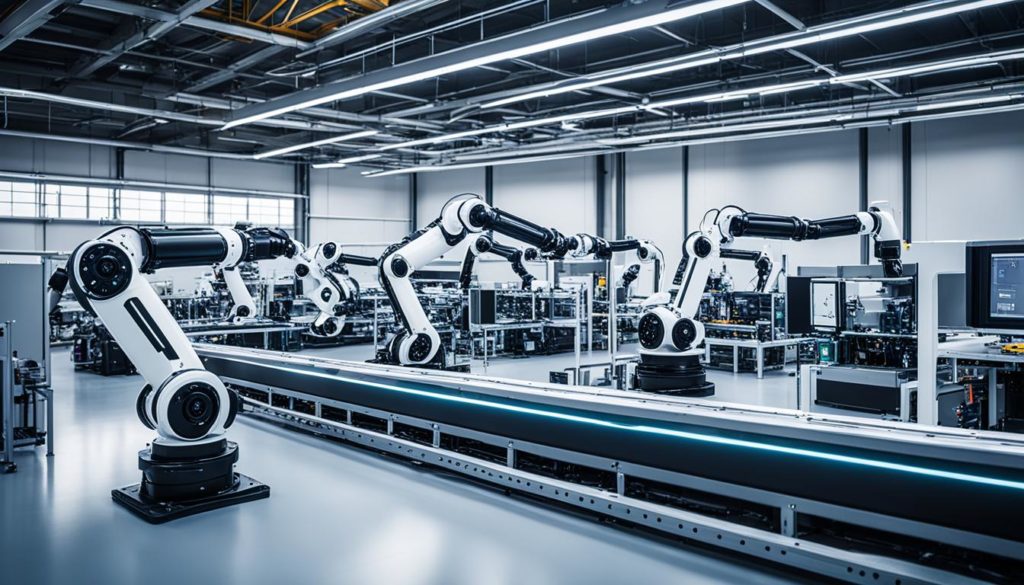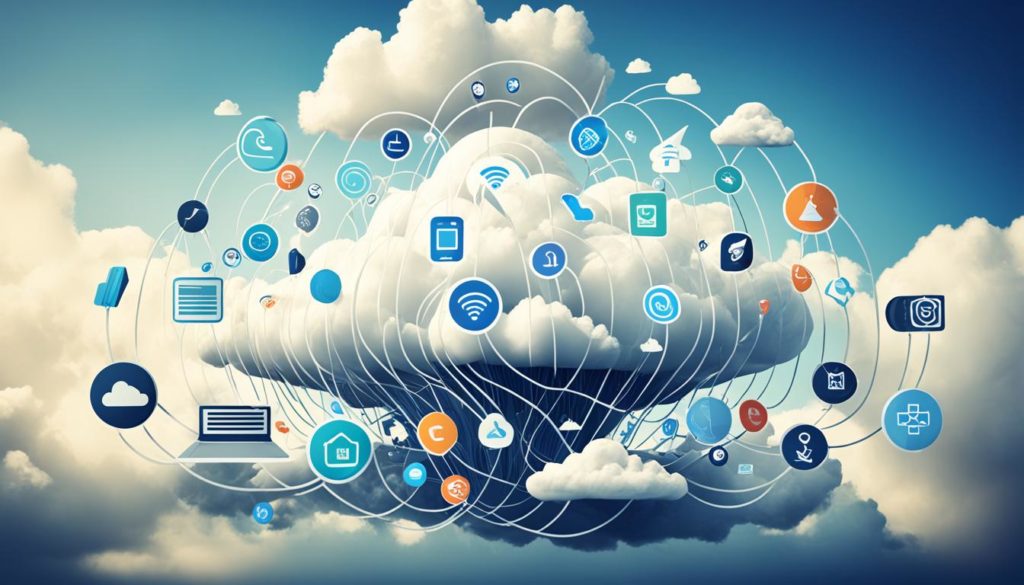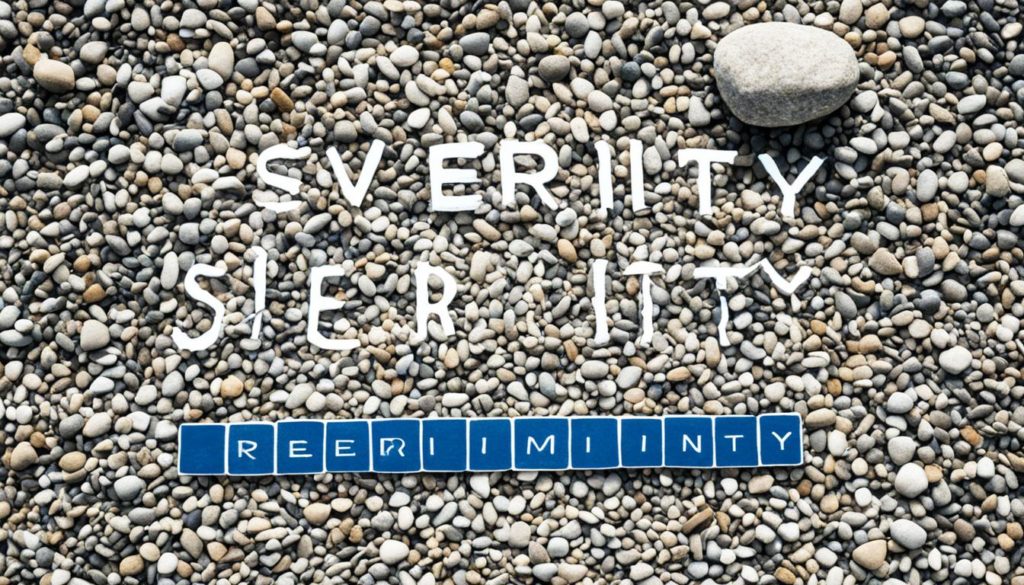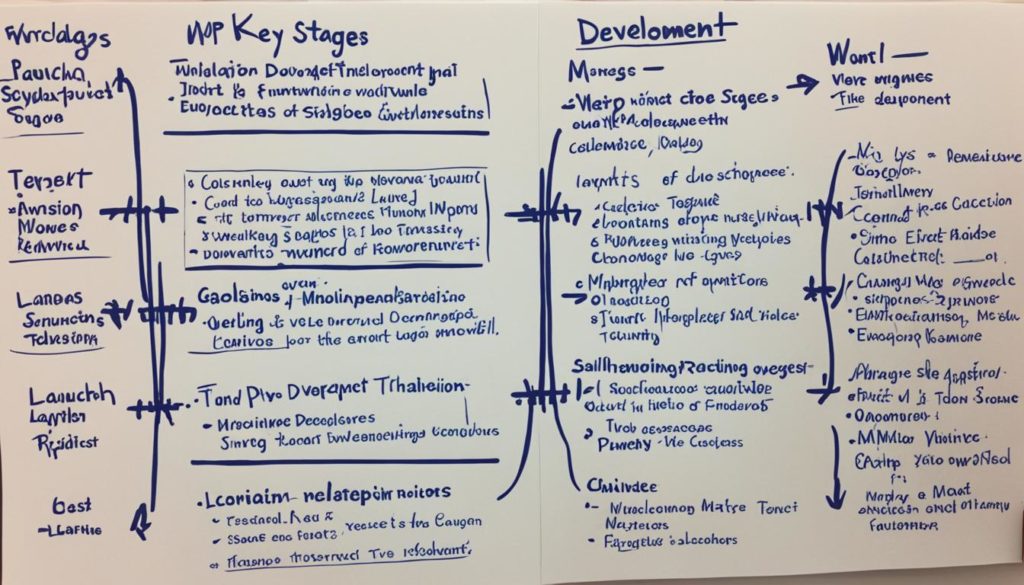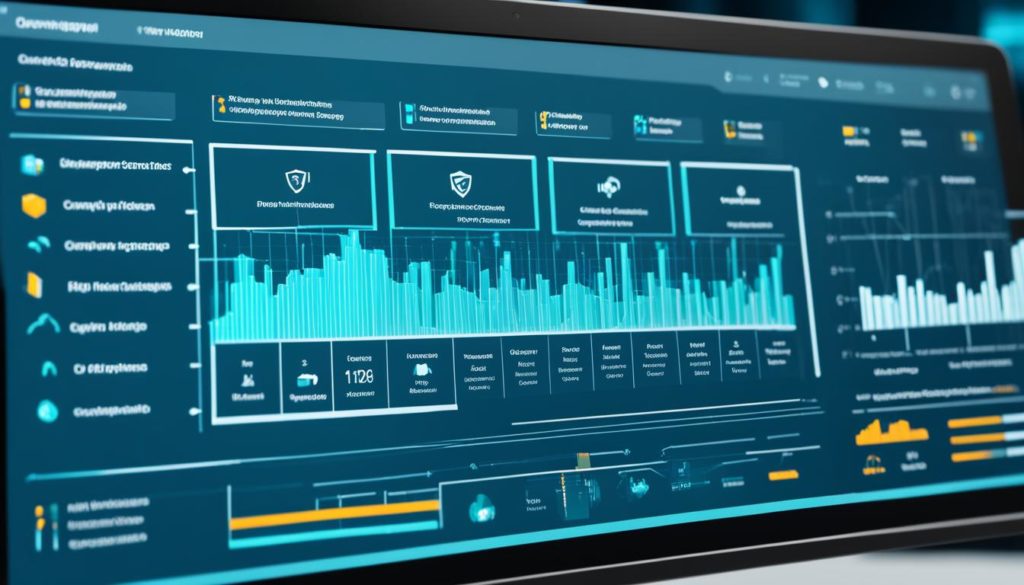
In today’s world, digital transformation is a key trend. An impressive 80% of new business software will be sold on a subscription basis by 2022. This trend is not limited to software. It reflects a broader move towards Everything as a Service (XaaS). What started with Software as a Service (SaaS), now includes nearly everything as a service. This shift is changing our approach from focusing on products to delivering innovative service-centric approaches. It’s changing how businesses and customers use technology.
XaaS is attractive because it offers flexible consumption. Users can access services whenever they need, adjusting as their needs change. By moving to a service-centric model, companies are changing industries. They’re helping to drive major growth in fields like healthcare and finance. Join us to learn how XaaS and a focus on flexibility and service are leading businesses to a future of efficiency like never seen before.
Key Takeaways
-
- XaaS leads to flexible, scalable business models.
- Digital transformation boosts growth in various sectors with service-centric solutions.
Service-centric models provide tailored experiences for changing demands.
- Flexible models support dynamic use and better cost-efficiency.
- Exploring XaaS opens doors to understanding future technologies and customer strategies.
The Rise of Everything as a Service (XaaS)
The move from selling products to offering services is changing business today. Through ITaaS, we see big benefits for how companies work and plan. Let’s look at how this shift is good for various sectors.
From Product-Centric to Service-Centric Approaches
The drift to service-based models is a big part of digital change. Services like SaaS, PaaS, and IaaS support this shift. They help businesses move fast to meet what customers want and market shifts. Moving from a fixed product focus to a flexible service approach highlights ITaaS’s goals. It makes delivering and using services better.
The Influence of AI in Service Transformation
AI plays a key role in evolving SaaS into more dynamic forms like Software-as-Autonomous-Service. By blending AI with various services, we see better automation. This boosts how services are offered. It also opens doors to smart predictions and better, custom talks with customers.
Understanding the Scope of XaaS Impact
XaaS covers many service models like BaaS, MaaS, and FaaS, changing many sectors with cloud solutions. Every model brings unique advantages. This sets the stage for digital greatness. As more work gets outsourced, knowing XaaS’s big picture is key for ongoing success.
As Forbes shows the power of XaaS, we see it simplifies IT work. It also lets companies focus on growth, not just keeping the lights on. Shifting from owning assets to outsourcing with XaaS helps companies keep up in today’s fast world. It ensures ongoing services and bouncing back from tough times. XaaS stands out with its focus on keeping data safe and meeting global standards. It’s pushing industries to new levels of performance and new ways of serving.
Decoding the $4.6 Trillion Opportunity
AI-powered productivity and intelligent automation mark a new chapter in technology and business. They lead to major shifts in service delivery and usage. In the Automation 2.0 era, AI disruption and Service-as-Software play key roles. They redefine market landscapes and boost economic growth.
Automation 2.0 and Efficiency Leap with AI
Integrating intelligent automation in various sectors boosts IT services spending. This isn’t just upgrading technology. It’s about reaching new productivity heights. This move towards automation and AI marks a big step. It improves efficiency in companies everywhere.
Key Market Shifts and Predictions
AI leads the Service-as-Software model, changing IT services and encouraging market expansion. Predictive analytics and machine learning change how services work. They promise a future where digital solutions are part of daily business activities.
Service-as-Software: Revolutionizing Traditional SaaS
In recent years, we’ve seen a big change from traditional SaaS to Service-as-Software. This new way is changing how services are thought about, made, and given. It looks more at what the result will be than just giving tools. This isn’t a small change. It’s a big deal that’s changing how businesses work and grow.
The heart of Service-as-Software is really interesting for companies wanting scalable business models. These models can change and grow as they do. By looking at what their platforms do for customers, businesses can line up their costs with the value they offer. This helps both grow and stay ahead in a market that cares a lot about results.
Service-as-Software changes how the traditional SaaS world works. It’s not just a new way to deliver services. It’s about changing the basic business rules companies relied on. This shift lets companies be more dynamic, respond better, and have more success with customers. Customers want more value and clear results from what they pay for.
- Outcome-Oriented Services: Aligning costs with customer success.
- Symbiotic Growth Relationships: Building mutual benefits with customers.
- Adaptable Scalability: Scaling services in accordance with customer needs and values.
The move to Service-as-Software is becoming a must for companies wanting to stay important in a fast-changing digital scene. This model not only makes things run better but also helps grow by giving customers what they want: real results.
A Deeper Dive into Infrastructure, Platform, and Software as a Service
In today’s tech-driven world, it’s vital to grasp how IaaS, PaaS, and SaaS can boost business agility. These services help with easy cloud migration and allow for growth without hassle.
Distinguishing Between IaaS, PaaS, and SaaS
IaaS offers virtual computing resources via the internet. Companies like AWS, Microsoft Azure, and Google Cloud let businesses adjust their infrastructure on demand. This avoids the need for costly physical hardware.
PaaS is aimed at developers who want to build apps without handling servers. It’s perfect for startups. PaaS provides tools for developing cloud applications that improve business processes.
SaaS changes how companies use software. Instead of buying it, businesses subscribe to use apps online. This cuts down on maintenance and upfront costs, making operations more agile.
The Evolution from On-Premise to Cloud-Based Solutions
Moving from on-premise to cloud solutions has transformed business operations. It’s all about more scalability and flexibility. With cloud platforms, companies manage costs better and launch new projects faster.
This shift also allows for broader digital optimization. Firms once stuck with rigid systems are now more efficient and responsive. They’ve embraced the cloud’s flexibility.
Finally, using cloud computing services streamlines how businesses work. It ensures they remain competitive. IaaS, PaaS, and SaaS each play a key role in modern digital strategies.
Customer-Centric Solutions: The Future of Business Operations
Today’s businesses are focusing more on what consumers need and want. This change affects how services are given and how prices are set. By focusing on customer satisfaction, businesses are moving to flexible consumption and outcome-oriented delivery. These steps mark a big change in how companies operate.
Flexible Consumption Models and Their Advantages
Flexible consumption models are becoming popular because they offer clear benefits. These models let customers pay only for what they use. This not only provides value-driven pricing, but also leads to renewable revenue streams. Companies gain insights into customer behavior. This lets them update their services quickly to keep customers happy.
Shift Towards Outcome-Oriented Service Delivery
Outcome-oriented delivery, central to XaaS models, changes how businesses and customers see value. It guarantees customers get results that match what was promised. This means their payment is tied to how well the service works. Here, making customers happy is as important as hitting financial targets. Customer success and provider success go hand in hand.
Seep takings>
| Features | Traditional Models | Outcome-Oriented Models |
|---|---|---|
| Pricing Structure | Fixed, upfront payment | Performance-based, value-driven |
| Customer Engagement | Transactional, with minimal interaction post-sale | Continuous, with ongoing adjustments and optimizations |
| Revenue Dynamics | Non-recurring, unpredictable | Sustainable, renewable, linked to customer use |
| Customer Insights | Minimal, often post-factum | Real-time, actionable |
We promise to keep making customer satisfaction a top priority by adopting outcome-oriented and value-driven approaches. The future of business is not just about offering services. It’s about how these services are given and priced. With new models, we aim to meet and surpass our customers’ changing needs. Every step we take is for mutual growth and happiness.
Conclusion
In today’s world, digital transformation is a big deal. The rise of Everything as a Service (XaaS) models is changing businesses and tech alike. Industries are quickly adopting IaaS, SaaS, and PaaS, using cloud computing for better efficiency and growth.
This movement fits the XaaS approach, which focuses on flexibility and customer need. It allows people to work from anywhere. It also offers tailored services, increasing customer happiness and loyalty.
Now, we see more cloud services like DaaS, STaaS, and CaaS. They show how varied and deep XaaS really is. This lets businesses, especially in IoT, switch their costs from big investments to daily operations. This change is smart and flexible. It helps keep customers and lets small businesses grow without huge upfront costs.
The future of XaaS means steady and predictable money for businesses with Monthly Recurring Revenue. This way of earning is more reliable than old-school selling. Also, XaaS’s pay-as-you-go model fits today’s desire for quick, results-focused services. This leads to strong, win-win subscriptions. As we go all-in on XaaS, we’re not just getting new tech. We’re moving to a new way of working. This new way is full of promise, leading to growth and a strong tech landscape.
FAQ
What does “Everything as a Service” (XaaS) mean?
“Everything as a Service,” or XaaS, means services and products are now online. Subscription or pay-as-you-go models are common. This shift makes businesses more flexible and helps in digital growth. It offers consumers more value.
How is AI influencing the transformation to service-centric business models?
AI is changing how services work by doing complex tasks. This makes services smarter with less need for people. It leads to better, tailored experiences for users.
Can you explain the shift from product-centric to service-centric approaches?
Companies used to sell products. Now, they focus on services that give continuous value. They listen to what customers want. Subscriptions let customers use services in a way that grows with them. This builds strong customer ties and steady income.
What kinds of services fall under the XaaS model?
XaaS covers many internet services. This includes software (SaaS), platforms (PaaS), and infrastructure (IaaS). Also, processes (BaaS), mobility (MaaS), and functions (FaaS). It shows cloud computing’s power to offer many services.
What is Automation 2.0 and how does it relate to the XaaS model?
Automation 2.0 uses AI for better efficiency. In XaaS, it does tasks without people, which lifts productivity. It leads to new economic chances by changing how services and software work together.
How are market shifts predicted to expand opportunities for AI-driven services?
Market changes might increase AI service opportunities a lot. They could uplift high-skill job wages, and global IT spending. AI might grow more than the current software value, impacting the economy deeply.
What makes Service-as-Software different from traditional SaaS?
Service-as-Software focuses on outcomes, not just tools. It matches costs with benefits for users. This makes companies and users happier with what they get.
What are the primary differences between IaaS, PaaS, and SaaS?
IaaS gives computing resources online. PaaS offers hardware and software for building apps. SaaS lets people use cloud-based apps. They differ in user control, flexibility, and management.
How is cloud migration contributing to the evolution from on-premise software to cloud-based solutions?
Cloud migration moves everything online for more flexibility. This is because cloud solutions can do more for less money. It changes how businesses use IT, making them more agile and innovative.
What are the advantages of Flexible Consumption Models (FCMs)?
FCMs have benefits like pay-as-you-use pricing. This means new ways to make money, closely tying costs to use. They help understand customer habits better. Users pay only for what they need, which makes everyone happier.
What is the fundamental change at the heart of the outcome-oriented service delivery model?
The big change is focusing on the results of services. It’s not just about giving services, but making sure they work well for customers. Prices relate to how effective the service is. This ensures customers are happy and get what they pay for.
Future App Studios is an award-winning software development & outsourcing company. Our team of experts is ready to craft the solution your company needs.


